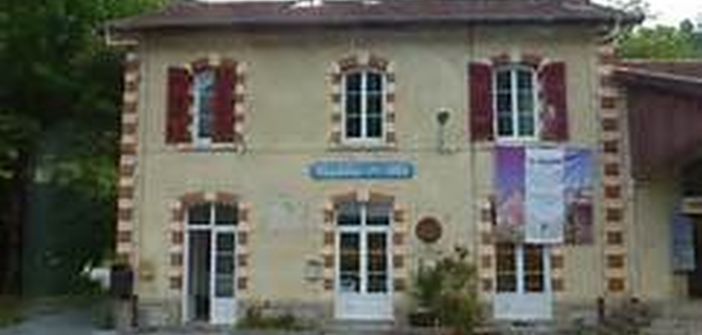The train, after leaving the Mescla gorges, crossing the road, and passing by Malaussène and Massoins, charming little villages, follows the banks of the Var where the vineyards of Villars stand impeccably aligned. The wine is renowned and appreciated by connoisseurs, and the train, a little out of breath, finally arrives at its destination.
The station still retains its water tower, a reminder of the bygone steam era, rusting from the wear of time. Villars, a small village in the County, awaits us, as the train, painted in the blood and gold colors of Provence, continues on its path. We begin our visit. A pleasant walk will lead us into this village hidden by the scrubland and hills.
Before the Christian era, Villars was called La Roccaria. It was the Romans who gave it its name. A leap into history takes us to the 4th century with evangelization. We previously mentioned the vineyards; it was the Templars who planted the vines. They succeeded the Abbey of Lérins. Around the year one thousand, the population chose the Savel plateau where this village is located today.
With the elimination of the Order of the Temple by King Philip the Fair, the fief successively passed to the Thorame, Glandève, and the Grimaldi of Beuil, who chose the Count of Savoy over Provence in 1388. In 1621, after the execution of Annibal Grimaldi by the Duke of Savoy, the castle already destroyed in 1412 was completely dismantled. Villars then came under the authority of the Vergagno and later the Count Salmatoris in 1723. It was a troubled period, with Catinat burning down the village in 1691.
In 1860, Villars chose imperial France and the prosperity of Napoleon III’s empire. Having briefly touched on the history, we will explore this village and discover its treasures and secrets. “I love to say secret, because it creates a somewhat mysterious atmosphere, giving a significant part to dreams and imagination.”
My impromptu guide leads me through the narrow lanes of his village. We admire the chapels of Saint Anthony, Saint Brigitte of Sweden, the ancient feudal gates, the communal facilities with the communal oven and mill. The open granaries (Souleiaires) where figs were dried, the ruins of the castle of Esperon, and the Castre which was the house of the Templars.
The parish church, Gothic in style from 1520, was decorated in 1766 with baroque frescoes and moldings. A 16th-century altarpiece and a polychrome wooden statue, both representing Saint John, are its treasures. The chapel of the White Penitents will complete the village visit. The sun is at its zenith, and it’s time to think about a meal.
Helios recites its symphony for us in the shade of a tree or seated on a shady bench, where we can leisurely enjoy a picnic and share the merenda with friends. We then savor the concerto of nature, made up of the songs of birds, a distant bell tower, or a branch cracking under a hiker’s foot.
Villars sets ablaze in the dusk of evening. It is time to return to the station where other nature lovers await on the platform for this train, signaling its arrival with a whistle.
Thierry Jan


